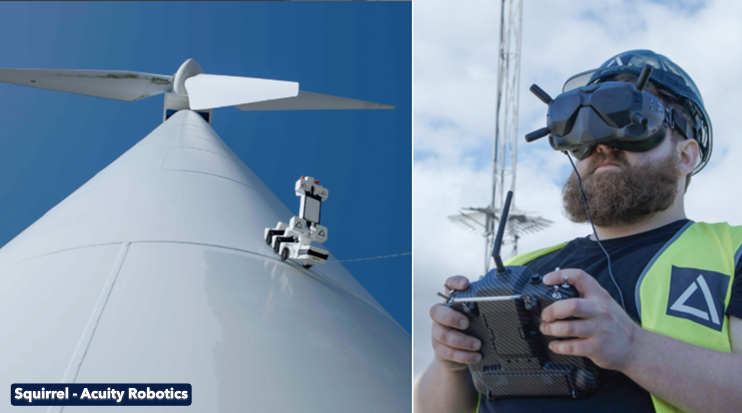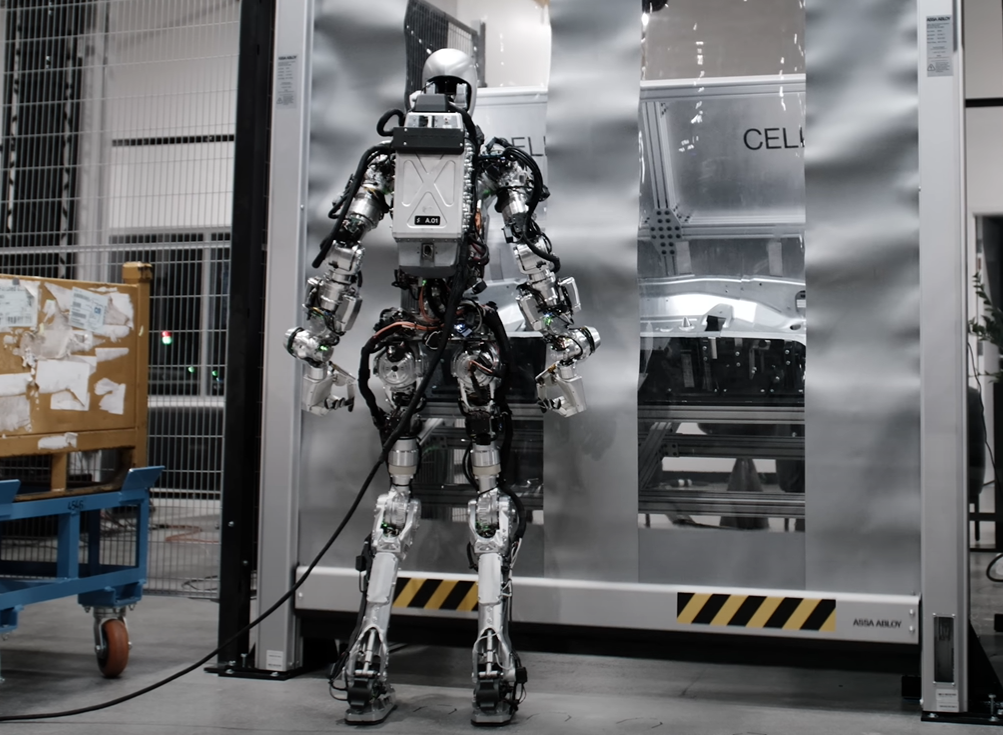As automation technologies grow increasingly sophisticated, the narrative surrounding artificial intelligence (AI) and robotics continues to oscillate between fascination and fear. Public perception, shaped by decades of science fiction and sensationalized headlines, often overlooks the measured, deliberate progress being made in industrial and domestic robotics. Yet behind the scenes, a quiet revolution is underway; one that reframes these systems not as harbingers of displacement, but as enablers of human potential.
Featured picture shows the teleoperated six wheeled climbing robot “Squirrel” from Acuity Robotics
A tool rather than a threat
A persistent fear in popular discourse is the idea that robots and AI will replace human labor and autonomy. This anxiety, while understandable, tends to disregard the nature of automation as a tool, rather than an autonomous force.
As with any tool (from a hammer to a spreadsheet) the outcome depends entirely on the user’s intent. When applied responsibly, robotics offers a means to tackle tasks that are dangerous, repetitive, or physically demanding, thereby redirecting human effort toward roles requiring judgment, creativity, and care.
This frame is especially important in contexts where AI accelerates, improves, enhances, enables (but does not replace) skilled labor. By embedding (and embodying) intelligent systems into collaborative environments, robotics becomes a partner in productivity rather than a threat to employment.
Early Familiarity Breeds Acceptance
Consumer-grade robotics has quietly laid the groundwork for broader public acceptance. Devices once considered science fiction (like autonomous vacuum cleaners or voice-operated assistants) are now common in many homes. This casual familiarity with non-threatening, functional robots (while far from it), helps eliminating the mystique and anxiety associated with the term “AI.”
Figure 1. First Robot in homes: Original Roomba from 2002, iRobot
The trend continues in industrial settings, where semi-autonomous tools assist workers rather than operate in isolation. Collaborative robots (or Cobots for short) demonstrate this shift. Designed to work safely alongside humans, Cobots challenge the zero-sum narrative of “robot versus worker.” Instead, they suggest a symbiotic model: machines handle the repetitive and ergonomically taxing tasks; humans oversee and intervene when nuanced decision-making is required.
Figure 2. Yu 5 Industrial cobot from Agile Robots.
Reality Check on Humanoid Robots
Despite headlines touting breakthroughs in humanoid robotics, practical deployment may need some time. Current iterations lack sufficient load capacity, endurance, and task-specific adaptability to perform industrial functions. Many cannot yet handle common tasks that an operator could perform without breaking a sweat.
What’s more, humanoid forms may not be always the most efficient solution. In an industrial environment, other configurations may prove more effective than a humanoid. As an example, there are some approaches where cobots are mounted on mobile platforms, and include a vision system integrated (e.g. CyNLR, Ultra, etc.) These configurations may offer lower immediate cost, lower maintenance complexity, and better alignment with existing workflows. The push for humanoids is powerful for many reasons, the potential of general-purpose humanoid robotics has not yet been fully realized, and they are characterized by their versatility.
Figure 3: Ultra’s intelligent warehouse robot packaging e-commerce orders in 3PL.
The Engineering Challenge of Trust and Safety for adoption
Regardless which path the robotics future holds, one of the critical challenges moving forward is designing for trust and safety. As robots take on more collaborative roles, human comfort and understanding become essential. Co-workers and Management alike must be able to predict robot behavior, interpret intent, and intervene when needed, with absolute safety. This demands thoughtful engineering: not only in safety protocols and physical design, but in how machines communicate their actions and limitations.
The intention is not to suppress technological ambition, but to guide it with human-centered design principles. Transparency in capabilities, limitations, and use cases fosters informed trust rather than blind acceptance or blanket fear.
How to control AI Misuse?
Concerns about AI misuse (particularly in military or surveillance applications) are as real as valid. But they are not unique to robotics. Every technology, from kitchen knives to nuclear reactors, carries dual-use potential. The responsibility lies in governance, and in the rules of innovation.
Framing AI purely through the lens of potential abuse overshadows the immense good it can do when paired with ethical intent and thoughtful regulation. Public discourse must therefore expand beyond dystopian tropes and focus instead on intent, governance, and application-specific realities.
Future tools
Ultimately, the conversation around AI and robotics must shift from fatalism to pragmatism. These are not omnipotent agents reshaping humanity; they are simply powerful tools. Their utility will be determined not by abstract fears, but by the real-world problems they are deployed to solve and the societal values that guide their use. In this framework of acceptance, it becomes easier to understand and support the real potential behind robotics: Human enhancement.
Sources
- Consumer adoption of home robotics has normalized AI integration https://www.mckinsey.com/ai-in-households-report]
- Construction labor shortages underscore need for assistive automation https://www.bls.gov/industry-construction-outlook]
- Teleoperated six wheeled climbing robot. Squirrel – Acuity Robotics



